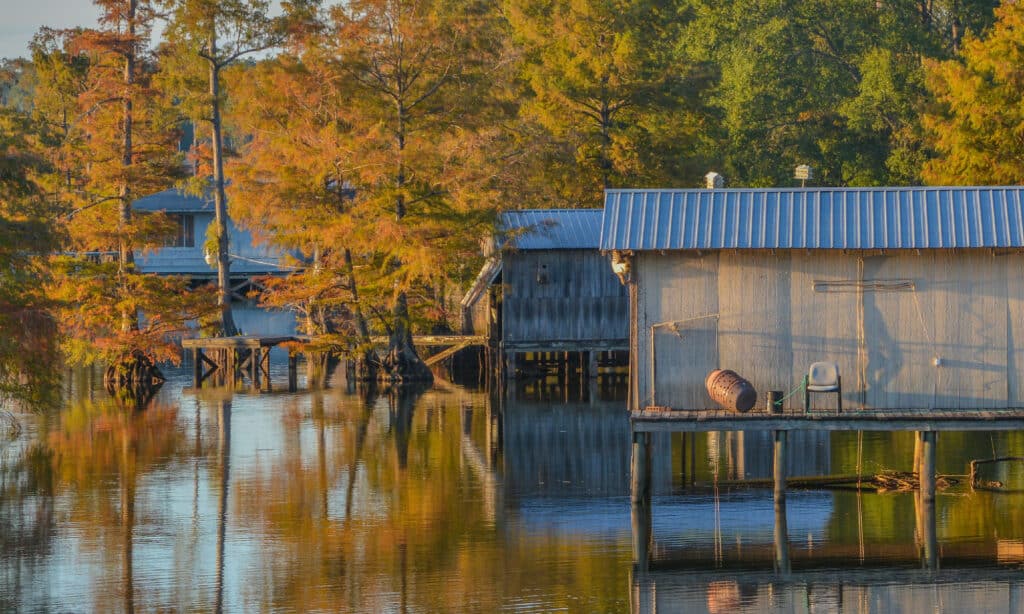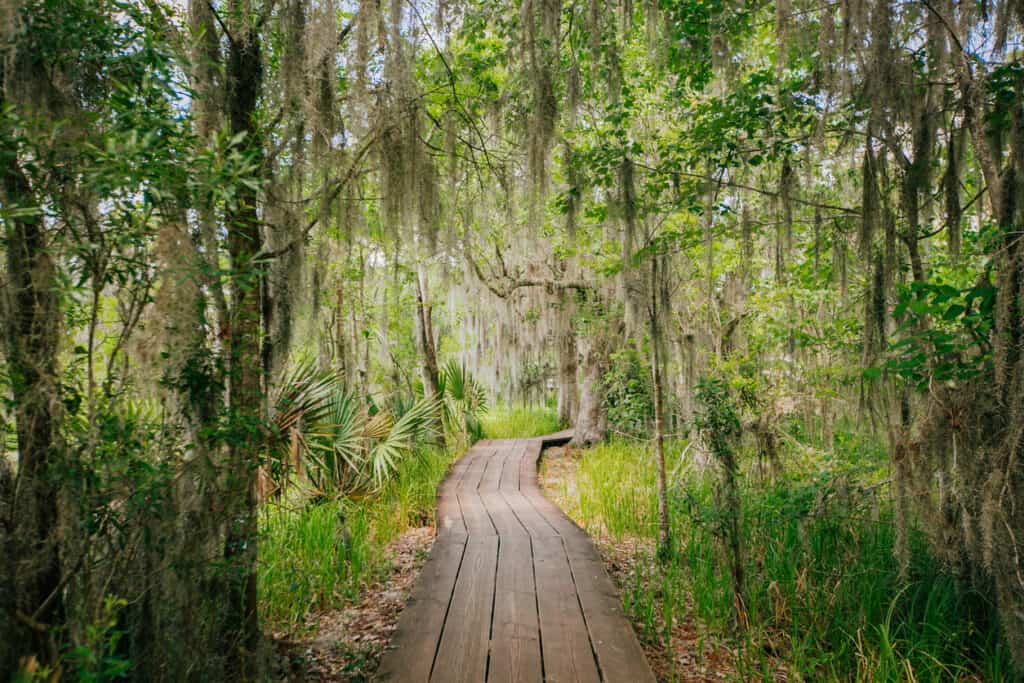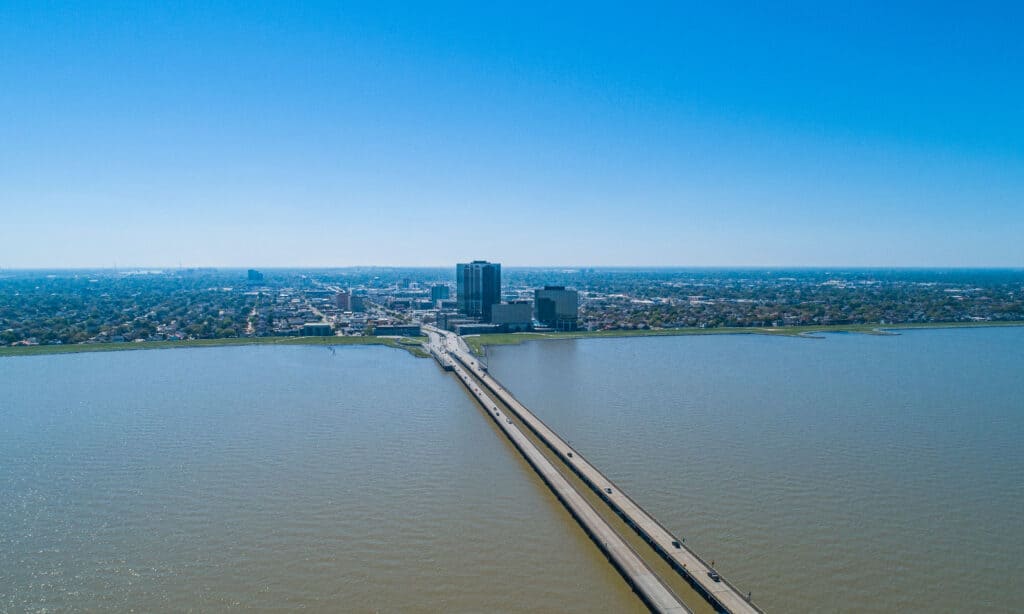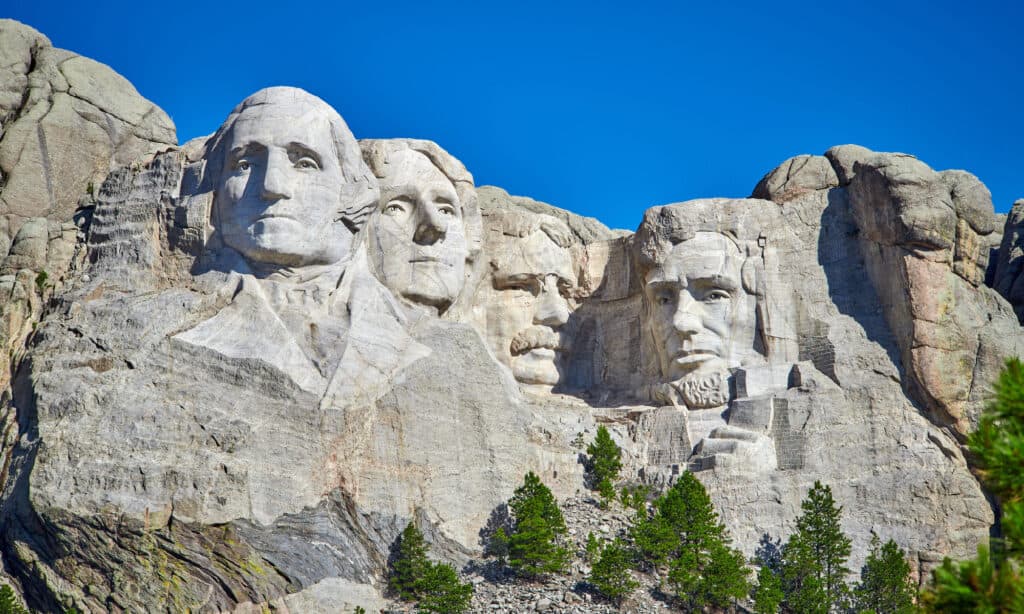As of 2021, 4.6 million people live in Louisiana, making it the 25th most populous state in the U.S. It covers roughly 51,563 square miles (33 million acres), mainly comprising breathtaking water bodies, bottomland hardwood forests, coastal prairies, and bayous. Most of these are the habitats of not only Louisianians but also a wide range of animals, including alligators, nutria, muskrats, foxes, birds, black snakes, skunks, and butterflies. But who are the largest landowners in Louisiana?
Certainly, Louisiana wouldn’t be the great state it is without its property owners. With landowners at the helm, industries like tourism, fishing, agriculture, salt mining, oil, and natural gas are booming, and the future looks even brighter. So, the big question is—who are these parties in control of the state’s land, and how do they utilize it to fuel the growth of various sectors? Continue reading to find out!
1. Foreign Entities – 1,390,000 Acres
A 2021 USDA report revealed foreign companies owned 1.4 million acres of Louisiana’s total agricultural land by the end of that year. Most of these entities were in Beauregard, Vernon, and LaSalle. And they included Canadian investors (31%) specializing in timber production, such as Telko, Teal Jones, and Interfor. While firms from the Cayman Islands were in charge of 16% of the state’s foreign-held acreage, those from the Netherlands had secured 22%. Others included:
- Dutch investors – 12%
- Italian companies – 7%
- German firms – 6%
- British companies – 6%
Recently, there’s been an upsurge in foreign land investments in the U.S. In Louisiana, in particular, entities from other states clinched 277,706 acres between 2015 and 2021, which is unsurprising given that forests here grow quicker than in many other regions, including Canada. Besides, the state has seen more than 15 weather-related incidents since 2019, decreasing the value of land and encouraging investors to take advantage.
Foreigner Farming in Louisiana
According to the USDA report, approximately 8% of Louisiana’s foreign land holdings are in farming, with some companies growing hemp, whose commercial production was legalized in 2018. In fact, most investors from Texas and Oklahoma who acquired nearly 500,000 acres in 2020 are believed to be in the large-scale production of marijuana. And there’s no doubt they could be making big bucks because cannabis is legal in the state, although only for medicinal purposes.
Farmers in Louisiana – both locals and foreigners – also produce other crops, including corn, sugarcane, sweet potatoes, soybeans, hay & haylage, feed grains, and cotton. Notably, crawfish farming is among the top thriving sectors in the state, with over 1,300 farmers owning more than 120,000 acres throughout the region.
2. Federal Government – 1,330,429 Acres

The U.S. Fish and Wildlife Service oversees over 20 national wildlife refuges in 29 parishes, including D’Arbonne National Wildlife Refuge.
©iStock.com/Norm Lane
Louisiana is among the states with a lower percentage of land controlled by the federal government. Only 1,330,429 (4.61%) out of its 28,867,840 acres are in the hands of the latter. And most of them have played a key role in the conservation of wildlife, the development of natural resources, and the provision of recreation and entertainment to the public.
The U.S. Forest Service controls 604,373 acres of federal government-owned land in Louisiana, while these agencies manage the rest:
- U.S. Fish and Wildlife Service – 564,117 acres
- U.S. Department of Defense – 127,934 acres
- U.S. National Park Service – 17,531 acres
- U.S. Bureau of Land Management – 16,474 acres
Fun Activities on Federal Lands
If you’re looking for quality entertainment, exploring federal lands, including parks and forests, is a good place to start. From fishing, swimming, and hunting to bird watching, camping, and biking, there’s no limit to the recreational activities you can discover in Louisiana. Of course, accessing most of these locations requires permits and licenses, and you must also adhere to various regulations, lest you’ll be on the wrong side of the law.
Animal lovers in Louisiana are in luck. The U.S. Fish and Wildlife Service oversees over 20 national wildlife refuges in 29 parishes. Expect to see many creatures at these establishments, such as colonial seabirds, blue crabs, white-tailed deer, mink, and spotted seatrout. Thankfully, you don’t have to pay a dime to enter as long as you have a self-clearing permit. Examples of these protected areas include:
- Cameron Prairie National Wildlife Refuge
- Mandalay National Wildlife Refuge
- Upper Ouachita National Wildlife Refuge
- Handy Brake National Wildlife Refuge
- Black Bayou Lake National Wildlife Refuge
- Bayou Teche National Wildlife Refuge
- Bayou Sauvage National Wildlife Refuge
- Breton National Wildlife Refuge
- D’Arbonne National Wildlife Refuge
3. The Martin Family – 582,000 Acres
Did you know that 89.3% of the land in Louisiana is privately owned? The Martin family controls a large chunk of it, with a whopping 582,000 acres under its name. Led by Roy O. Martin III, the family runs the Roy O. Martin Lumber company, which has been around since the early 20th century. This firm has played a vital role in the evolution of the lumber industry in the United States, so it has a good enough reason to possess so much land.
Headquartered in Alexandria, RoyOMartin has 1,200-1,300 employees and several subsidiaries. It deals in a vast array of products and services, including:
- Solid wood and plywood products
- Real Estate
- Land leases
- Consulting
- Stewardship
- Healthcare
Who Founded RoyOMartin?
The Martin family’s patriarch, Roy O. Martin, Sr., established RoyOMartin in 1923. Back then, it was a small family-owned and operated sawmill in Alexandria. Roy aimed to buy as much land as possible and hold it because “they don’t make any more.” Impressively, by the time he passed on at 82 in 1973, he had seen his dream to fruition as the Martin family owned hundreds of thousands of acres across Louisiana.
RoyOMartin has been a family-operated company since its inception, with members of the Martin family leading it throughout three generations. The corporation formed The Martin Foundation in 1994 to promote philanthropic giving. Currently, it’s involved in the following:
- Supporting education for all
- Assisting the homeless
- Helping out orphans, single parents, and victims of domestic abuse
- Promoting cultural activities
- Providing disaster relief
4. Bill and Melinda Gates – 70,000 Acres
Everyone knows Bill Gates as the co-founder of the multinational tech company Microsoft. With a net worth of $107.4 billion as of 2023, he’s also among the top 10 wealthiest men in the world. While he’s funneled a portion of his fortune towards changing the world through various philanthropic projects, he’s also spent a part of it amassing land across the United States.
Gates owns about 270,000 acres of farmland in almost 20 states, including Arizona, California, Colorado, Arkansas, Indiana, Michigan, Ohio, North Carolina, Wyoming, Florida, and Louisiana. In Louisiana alone, he has secured 70,000 acres with his ex-wife, Melinda. The land includes Angelina Plantation Farms in Monterey, managed by Gates-affiliated companies.
Why is Bill Gates Accumulating Farmland?
People worldwide are curious to understand why Gates has been buying large tracts nationwide. Does he only want to diversify his portfolio, or is there more to it? Well, the mogul values the agricultural sector, and he knows that seed production can help win the war against serious global issues like deforestation and poverty.
Gates is into modern farming practices, such as seed technologies and super crops. And his move to invest in farmland to expedite these advancements could affect the agricultural sector in Louisiana and beyond. Of course, other entrepreneurs have begun viewing land as an excellent investment opportunity, meaning they no longer take it for granted.
How Did Bill and Melinda Gates Split Their Assets?
In 2021, Bill and Melinda Gates divorced after 27 years together. Everyone couldn’t help but wonder how they shared their combined $145-billion fortune, including the land in Louisiana. Since the former couple lacked a prenup, they used a separation agreement to divide their wealth. However, information about the ownership status of their 70,000 acres in the Pelican State is still in the dark. But there’s a chance they jointly possess the property as they still team up on different philanthropic missions through The Bill & Melinda Gates Foundation.
One of the ways The Bill & Melinda Gates Foundation fights poverty and disease is by sinking its money into the agricultural sector. In 2008, it spent $306 million in grants to support small farmers in Africa and other developing regions. It also collaborated with the recently closed Department for International Development to back farming projects worldwide.
5. Golden Ranch Farms – 52,000 Acres

Golden Ranch sustains the growth of a broad range of tree species, including oak, tupelo, cypress, willow, and gum.
©iStock.com/Rebecca Todd
The history of Golden Ranch dates back to 1744 when the Hwacha and Chaoucha Indians sold it. Today, the plantation in Gheens sits on 52,000 acres of pristine land, priding itself in being Louisiana’s largest privately-owned refuge. Its owner, Arlen “Benny” Cenac Jr., has turned it into a one-of-a-kind property by spearheading various conservation and sustainability projects.
Wildlife and Environmental Protection
Benny Cenac has invested much time and money in building sturdy flood control structures to keep saltwater away from Golden Ranch and protect its marshland. This is a priority because it’s a surefire way to conserve the wildlife living on the farm, such as birds, nutria, deer, alligators, and fish. It also sustains the growth of a broad range of tree species, including oak, tupelo, cypress, willow, and gum.
Cenac has demonstrated a great commitment to protecting wildlife through Golden Ranch. He has strived to build and maintain the property’s legacy for many years, explaining why he’s worked with many organizations to preserve the environment. Some of these are:
- Restore or Retreat
- Louisiana Wildlife and Fisheries Foundation
- Louisiana Wildlife Federation
- The Bayou Community Foundation
- Ducks Unlimited
How Does Golden Ranch Make Money?
Sugarcane is one of Golden Ranch’s top income sources, as it has produced the crop since the dawn of the 19th century. Cenac has set aside nearly 1,000 acres to grow the plants, which he later moves to a local factory for processing. Centuries ago, the farm had ceased sugarcane production until Charles Gheens restarted it in 1920 when he purchased the land, which he also leased to farmers within the region.
Besides sugarcane farming, Golden Ranch is known for its vast alligator farms. Cenac has certainly mastered these reptiles’ lifecycles. So, he collects their eggs, incubates them, and waits until they hatch. Afterward, he cares for these attentive and surprisingly intelligent animals and harvests their skins to export them to countries like Italy for profit. More often than not, alligator leather is used to make premium fashion items and accessories, including:
- Handbags
- Boots
- Belts
- Shoes
- Clothes
What to Do at Golden Ranch
With plenty of distinctive marsh waters, beautiful, fast-growing trees, and swamps, Golden Ranch Farms is the perfect destination for revelers. Here, you can indulge in thrilling activities such as hunting, wildlife, and bird watching, and freshwater fishing.
Of course, the first thing to do when you plan to visit Golden Ranch is to reach out to Cenac; his contact details are on his company’s website. Then, prepare adequately by getting the gear you need to participate in your preferred pursuit.
6. Land Trust Louisiana – 10,000 Acres
So far, Land Trust Louisiana has preserved 10,000 acres in the state. The organization protects the latter’s natural lands and green spaces to maintain the most fragile ecosystems and help build sustainable communities. Moreover, it hopes to form mutually beneficial partnerships with various community groups, landowners, and local, state, and federal agencies to shape a better future for all.
In addition, Land Trust Louisiana is actively involved in improving water quality. As of 2020, over 90% of the water bodies accessed in the state were polluted, so their water wasn’t safe for wildlife and humans interested in drinking it or indulging in watersports like swimming.
Should You Buy Land in Louisiana?
Purchasing a piece of land in Louisiana is a great investment. The average price per acre is $4,119, according to Land.com, which is more affordable than in states such as Missouri, where an acre of non-irrigated cropland sells for $8,318. The state is also pet-friendly, meaning you can bring your furry pal anywhere if you’re living there.
Again, the cost of living in Louisiana is 7% below the national average. Therefore, you’ll pay less for housing, utilities, transport, childcare, and other necessities, giving you an advantage over people in expensive states like Hawaii and Alaska.
Cons of Owning Land in Louisiana
Unfortunately, purchasing land and residing in Louisiana has a few downsides. The state is prone to severe weather, including hurricanes and tropical cyclones. Fortunately, it hasn’t experienced an event as devastating as Hurricane Katrina since August 2005. The storm caused significant damage between $97-$145 billion and the loss of over 1,800 lives.
Louisiana is also known for its oversupply of bugs and insects, especially during warm climates. Yes, these species are important because they control the populations of other life forms and pollinate plants. But some also carry diseases and can be incredibly annoying.
Land Ownership in Louisiana

This state allows you to discover fascinating attractions, ranging from the French Quarter to the iconic Lake Pontchartrain Causeway.
©Mark Runde/Shutterstock.com
Becoming a landowner in Louisiana is among the fastest ways to accumulate wealth and protect the ecosystem. Those in charge of all acres in the state have a duty to manage their properties properly. This helps to conserve the habitats of many animal and plant species and combat global issues like climate change and food shortage.
But, of course, there’s more to owning land in Louisiana. This state allows you to discover fascinating attractions, ranging from the French Quarter and Mardi Gras to the iconic Lake Pontchartrain Causeway. If you’re thrilled by the state’s rich history, the Old State Capitol in Baton Rouge is one of the best places to visit.
Moreover, landownership in Louisiana provides an opportunity to make the most of its natural resources, like the Gulf of Mexico and the Atchafalaya Basin. From water sports to fishing, there is plenty for everyone to enjoy.
Summary of the 6 Largest Landowners in Louisiana
| Number | Landowner | Acreage |
|---|---|---|
| 1 | Foreign Entities | 1,390,000 |
| 2 | Federal Government | 1,330,429 |
| 3 | The Martin Family | 582,000 |
| 4 | Bill and Melinda Gates | 70,000 |
| 5 | Golden Ranch Farms | 52,000 |
| 6 | Land Trust Louisiana | 10,000 |
Who Are the Largest Landowners in the United States?

The U.S. Government owns 640 million acres of land, making it the largest landowner in the United States.
©iStock.com/Patrick Jennings
There are two worth mentioning as relating to the largest landowners in the United States. The first is probably pretty obvious-the U.S. Government. Shared between the National Park Service, the Forest Service, the Bureau of Land Management, the Fish and Wildlife Service, and the Department of Defense, over 640 million acres of U.S. land are owned by the Federal Government. That’s roughly ⅓ of all the land in the United States, which averages out to a total of 2.3 billion acres.
The largest landowner in the United States other than the Federal Government is the Emmerson family, whose patriarch Red Emmerson founded Sierra Pacific Industries in Anderson, California. This company is focused on lumber production, operating a number of sawmills. The Emmerson family owns approximately 2,330,000 acres of land.
The other top largest landowners in the U.S. are:
- John Malone–2,200,000 acres (land committed to conservation)
- The Reed Family–2,100,000 acres (lumber production and forests)
- Ted Turner–2,000,000 acres (ranching and agricultural research)
- Stan Kroenke–1,627,500 acres (farmland, ranches, renewable energy)
The photo featured at the top of this post is © Roland Toups/Shutterstock.com
Thank you for reading! Have some feedback for us? Contact the AZ Animals editorial team.






